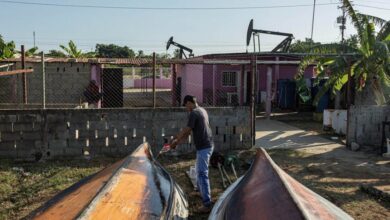Is the Global Gender Gap Closing?
Every year, the World Economic Forum publishes the Global Gender Gap Report, which examines the disparities in Economic Participation and Opportunity, Educational Attainment, Health and Survival, and Political Empowerment between men and women in over 144 countries.

The Woman Post | Valentina Ibarra & María Claudia Londoño
Listen to this article
After one year of the pandemic, the report starts to give us insight into how the sanitary emergency affected the genders differently. The average distance in parity for 2021 for all countries is 68%, which is 0.6 perceptual points less than 2020. Because of that, now it will take 135.6 years to close the gap, almost 36 years longer than last year’s projection. And even more worrisome, the report does not fully cover the impact of the COVID-19 pandemic, so the consequences might be even worse than expected.
It is important to resalt that not all dimensions of the report have the same disparity. The smallest gap is found in Health and Survival, which has been 96% closed. But even as good as it looks, the gap widened compared to 2020, and it is not due to covid. Closely, the educational attainment is 95% closed, but the missing gap is going slowly, so it might take longer than originally predicted, which was 14 years. And with the COVID-19 situation, added with socioeconomic conditions of each country, these two dimensions might suffer a bigger regression.
In contrast, the biggest gap is found in Political Empowerment, which is 22% closed. Compared to 2020, it lost 2.4 percentage points, making the projection of closing the gap goes up to 145 years. Women's representation is still lacking, as in 81 countries, there has never been a women's head of state (president, prime minister, etc.) and only represented 26.1% of the legislative (congress, parliament, etc.) power.
Also read: ADRIANA CÁRDENAS, MANAGING ONE OF THE TEN BEST CREDIT CARDS
The last dimension, Economic Participation, and Opportunity is 58% closed. The progress towards equal pay is going slowly, while the lack of women in big managing positions continues to be a reality, with only 27% of the positions. This indicator does not reflect the real impact of the pandemic yet, so the gap can widen up to 4% since unemployment is hitting harder for women.
The Woman Post spoke with Claudine Schmuk, based in Paris, who has been conducting an interesting research study at a global level with the participation of UNESCO and various entities worldwide, which seeks to obtain indicators by region about the participation of women in sectors traditionally occupied by men, such as the STEM areas (Science, Technology, Engineering and Mathematics for its acronym in English) and thus take actions to close gaps. The coverage of this survey arises with the problem detected from the academic and labor fields where the spaces occupied by women is very low and covers countries in several continents, Canada, Africa, Central and Latin America, Europe, with 160 active organizations and 80 allies in 35 countries taking part. Access the survey by clicking here.
The invitation is to fill it out and invite other entities, foundations, and companies to join these efforts in favor of achieving equity and parity and generating changes




